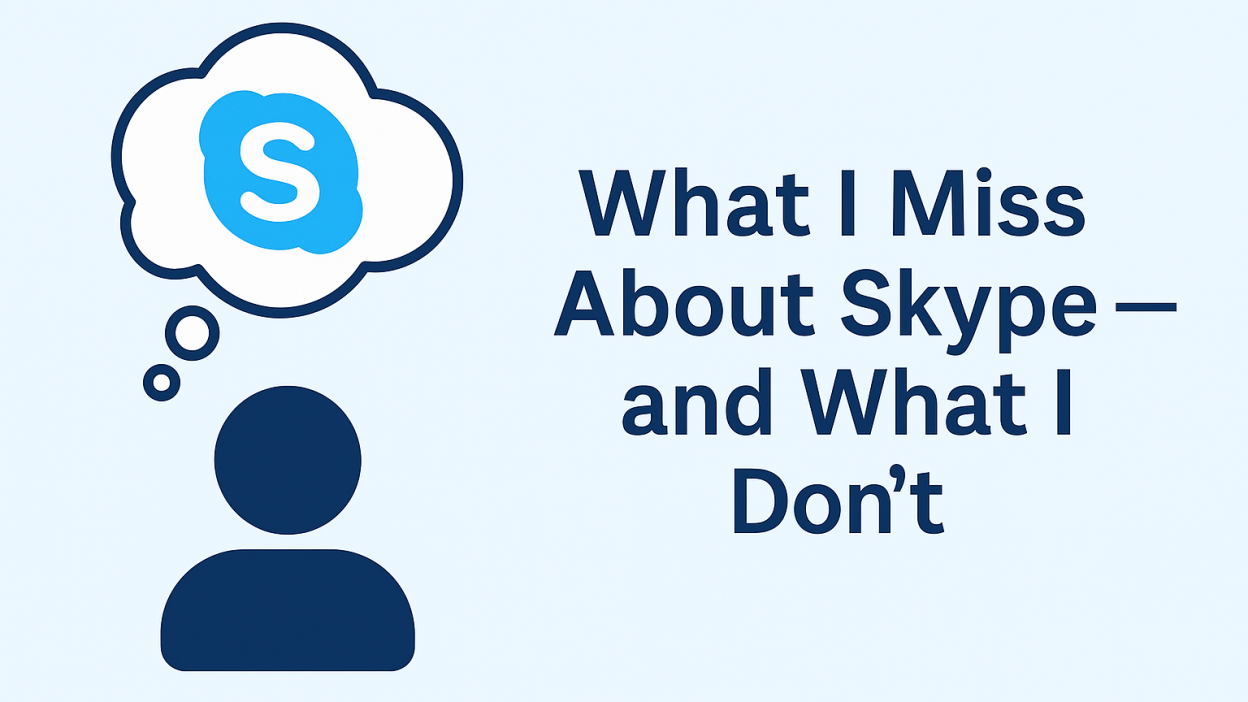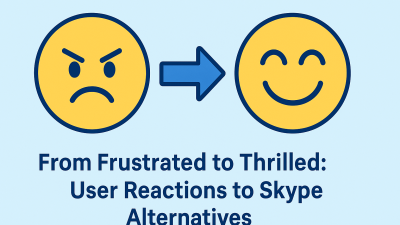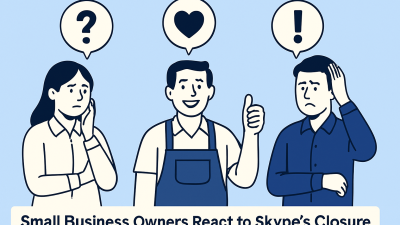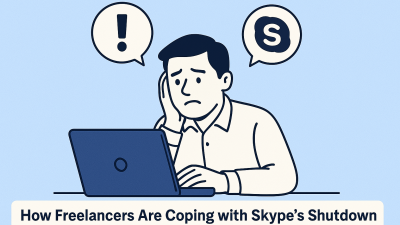You didn’t need a walkthrough when you first opened Skype. You logged in, saw a green dot next to a name, clicked it, and you were there. The screen changed, the dial tone buzzed, and suddenly you were speaking, not just typing, across time zones, oceans, languages.
That feeling was unique. Skype wasn’t noisy. It didn’t try to guess what you wanted. It existed to connect you to someone, voice to voice, face to face, and then stepped out of the way.
What made it special wasn’t how advanced it was, but how grounded it felt. It didn’t ask you to build channels or integrate tools or learn terminology. It offered something far rarer: presence. And in a world that’s increasingly busy and distracted, presence is a hard thing to come by.
The Human Side of Calling Was Baked Into Skype
There’s something about hearing someone’s voice without delay, without filters, without algorithms prioritizing what you see and when you see it. Skype brought back the texture of conversation — full sentences, silences that felt okay, faces that weren’t cut into 15-second clips.
People didn’t just call to exchange info. They called to spend time. You’d leave Skype running while you cooked, folded laundry, or just hung out in silence together. It was less about function, more about closeness. That casual intimacy — that “leave it on” comfort — isn’t something most apps get right today.
There’s a reason so many long-distance relationships, remote teams, and cross-border friendships were built on Skype. It wasn’t trying to be efficient. It was trying to be real.
Skype Made Calling International Feel Local
Calling overseas used to be expensive, complicated, and unreliable. Skype erased that.
You didn’t have to go buy calling cards. You didn’t need to ask if someone had the same device or app. If they had a phone or computer, they were reachable. And it didn’t cost a week’s groceries to check in with your cousin, parent, or partner.
What’s easy to forget now is how revolutionary that felt at the time. Skype wasn’t offering something flashy, it was offering access. And for millions of people who lived far from the people they loved, it became the most important app on their devices.
You remembered birthdays because of Skype. You got to see your nephew take his first steps because of Skype. These weren’t just technical achievements. They were emotional moments made possible by a call that didn’t drop and a price that made it possible to try again if it did.
Skype Wasn’t Built for Multitasking — And That Was the Point

Today’s tools are built for busyness. Chat while sharing files, while scheduling meetings, while clicking between three tabs of conversation. Most platforms are built to keep you inside, switching, reacting, cand licking more.
Skype didn’t work that way. You were either on a call or you weren’t. There was no stream to refresh, no likes to chase, no sidebar full of notifications.
It felt intentional. You made space to talk. You showed up. And in doing so, you gave that person your attention in a way few apps ask for now.
Some people saw that as a limitation. But for those of us who used Skype to stay grounded in relationships that distance made fragile, it was the very thing that kept them alive.
The Sound of Connection — And the Ritual That Came With It
If you used Skype regularly, the sounds are probably still in your head. That startup swoosh. The classic ringtone. The moment the screen flickered from “calling” to “connected.”
It wasn’t just a function — it was ritual.
That ritual had weight. You knew a conversation was starting. It had a beginning, a rhythm. You prepared for it. You smiled when it connected. You noticed when someone logged off.
It made online communication feel more human than it does now, in an era where people are always “on,” always reachable, but rarely really present.
But It Wasn’t Always Smooth — Skype Struggled to Keep Up
As much as we remember Skype fondly, it wasn’t flawless. There were years when it felt like it was slowly breaking down.
Calls would drop. Notifications arrived out of order. Messages wouldn’t sync across devices. And the mobile experience, especially in the early days, felt like an afterthought.
While competitors raced ahead with cleaner design and better mobile functionality, Skype seemed to age without evolving. What was once pioneering started to feel patchy. The simplicity that once felt elegant started to feel bare.
And updates didn’t help. New versions often introduced clutter instead of clarity. The interface became harder to navigate. The call quality, the very thing Skype built its name on, became unreliable.
Even loyal users started asking: Is this still the best way to call?
Replacing Skype Isn’t Just About Features — It’s About Intention
It’s easy to think that the end of Skype is no big deal. After all, we have more tools than ever. Teams. Zoom. FaceTime. WhatsApp. Plenty of options, right?
But replacing Skype isn’t just about lining up a list of features and ticking boxes. You can find apps that let you make calls. That’s not hard. What’s hard is finding something that creates the same kind of experience.
Skype wasn’t built for speed. It wasn’t optimized for quick DMs or multitasking. It was designed for a slower, more intentional kind of communication — one where voice mattered more than reaction speed, and where conversations weren’t framed by thread IDs or message limits.
That’s what most replacements are missing. They give you the tech, but not the space. They let you connect, but they don’t always help you feel connected. And that difference, while subtle, is what defines whether a tool actually fits or just functions.
Microsoft Teams Offers More Power — But Less Personality
Microsoft has made it clear: Skype is done, and Teams is its replacement.
If you’ve already logged into Teams with your Skype credentials, you’ve seen what that looks like. Your recent chats may carry over. Your contacts may sync. You might be able to make a voice call or start a video chat. On paper, the basics are there.
But something else is gone — the simplicity.
Teams is designed for structure. It expects you to organize things into spaces. It expects roles and permissions. It expects collaboration, scheduling, files, and workstreams.
Even if you ignore all that and just try to use it like a call app, it’s still built for something else. It doesn’t feel natural the way Skype did. It doesn’t invite conversation, it just supports it, once you’ve figured out how to use it.
This isn’t a criticism of Teams. It’s a recognition of reality. It’s a platform designed for a different kind of user, one who’s already deep inside the Microsoft ecosystem, juggling meetings, deadlines, and shared folders.
For casual users, families, or anyone just looking to talk, Teams is a lot to wade through for a simple call.
Video Chat Is Everywhere — But It’s Not the Same
There’s no shortage of apps that let you talk face-to-face. The problem is, none of them has quite captured what Skype offered in its prime.
Zoom is solid for meetings, but it’s not something you leave running for hours with a friend on the other side of the world. It’s structured, time-bound, and designed for work.
FaceTime is smooth if you and your contacts all use Apple devices. Otherwise, the walls go up quickly.
WhatsApp is fast and global, but it’s mobile-first, and the call quality can vary widely depending on signal strength and device.
Most apps today treat calling as a secondary feature. It’s there if you need it, but the platform is really designed for messages, threads, reactions, and feeds. Skype, for all its limitations, never stopped centering voice and video. That’s why its absence still feels like something real is missing, especially if calling was your main use case.
International Calling Was Skype’s Superpower — And It’s Hard to Replace
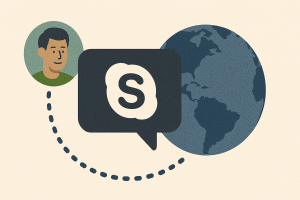
One of the most practical things Skype did better than most was international landline and mobile calling. It offered flat rates, clear pricing, and enough flexibility that users across age groups and tech skill levels could make it work.
It didn’t require both people to have the app. You could dial someone’s actual number. That made it useful not just for digital natives, but for parents, relatives, older family members, and clients in parts of the world where smartphones weren’t a given.
That specific strength, calling people who aren’t on the same platform, is still incredibly valuable. But it’s not a space many new apps are focused on.
Which is why, if that was your main use of Skype, Teams isn’t the right replacement. It’s too complex, and it doesn’t offer direct, affordable phone calling in the same way.
Tools are filling that gap, and one of the most focused ones is MyTello. It lets you make international calls to actual phone numbers at affordable per-minute rates, without needing the other person to install anything or be online. If that’s what Skype was for you, the ability to call anywhere, reliably, MyTello may feel more familiar than anything Microsoft is offering now.
Skype Was Flawed — But It Was Honest About What It Was
It’s important to acknowledge this: Skype wasn’t perfect. It lagged. It froze. It could take five tries to connect a call, and sometimes it felt like updates made things worse, not better.
But even in its awkward years, Skype stayed rooted in one thing: communication. It didn’t chase trends. It didn’t pivot to social. It didn’t bury features behind layers of design. It stayed focused on helping people talk.
And that focus gave it staying power. Even when newer apps came along, a lot of people stuck with Skype because it felt like theirs. It didn’t constantly change. It didn’t try to be something it wasn’t.
In a tech landscape where everything feels temporary, that kind of consistency mattered.
You Don’t Have to Settle — You Just Have to Choose Differently
The end of Skype doesn’t mean the end of voice-first, meaningful communication. But it does mean you need to be more intentional about how you create that for yourself now.
If Teams works for you, great. If it doesn’t, you’re not doing anything wrong. It wasn’t built with everyone in mind.
You might need one tool for work, another for friends, and a third for calling relatives abroad. That’s okay. What matters is that it works, not just technically, but emotionally.
There’s no perfect replacement for Skype. But there are paths forward.
Some are lighter. Some are simpler. Some, like MyTello, quietly bring back the one thing Skype gave best: a clear line between you and the person you want to reach.
The Goodbye Isn’t the Loss — Forgetting What Worked Is
The real risk isn’t that Skype is going away. It’s that in the flood of new tools, we forget what actually made it work. We forget how valuable it was to have a platform that prioritized voice, clarity, and ease. We forget that simple doesn’t mean outdated, it means accessible.
Skype may not return. But what it stood for doesn’t have to disappear with it.
If what you miss most is hearing someone clearly, without hassle, you still deserve that. And now, you get to find it again, on your own terms.

